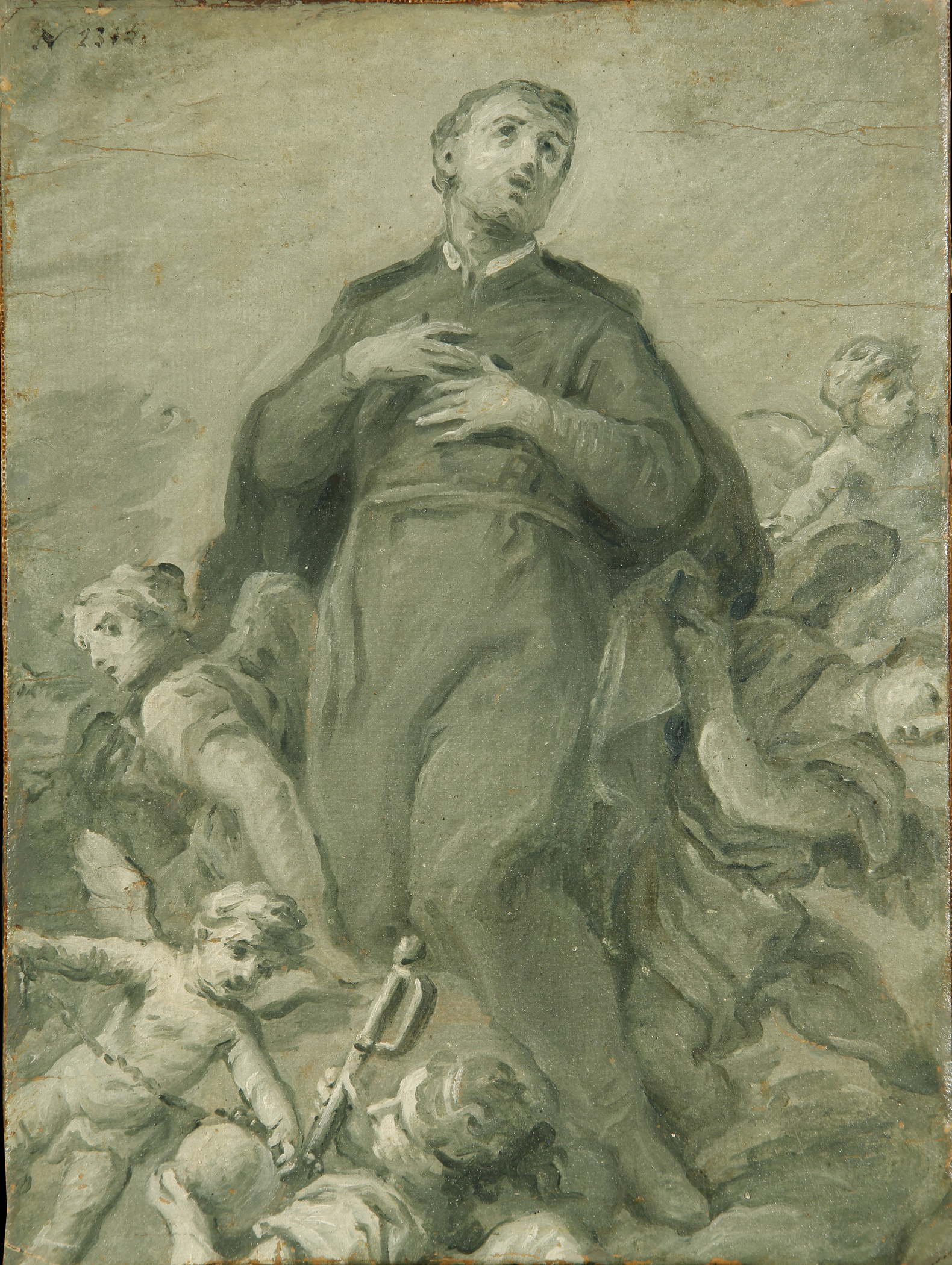Jacopo Calvi called Sordino
(Bologna, 1740 - Bologna, 1815)
Saint Girolamo Emiliani in Glory with Angels
Oil on paper
265 x 198 mm (10.43 x 7.80 inches)
Jacopo Calvi called Sordino
(Bologna, 1740 - Bologna, 1815)
Saint Girolamo Emiliani in Glory with Angels
Oil on paper
265 x 198 mm (10.43 x 7.80 inches)
Re: 0091
Iscriptions: N. 2313
Price: € 4.500,00 - circa US $ 4.905,00
Description:Iseppi, Iacopo Alessandro calvi, pittore e poeta. "Nuove congiunzioni fra Bologna e Bergamo nel segno di San Gerolamo Emiliani", in Arte Lombarda, N. S. 175, 3, 2015, pag. 139, ill. 2, pag. 142
A. Loda, San Gerolamo Emiliani e la sua iconografia nei territori bergamasco e bresciano, in Itinerarium caritatis. Girolamo Emiliani padre degli orfani. Opere dal territorio bergamasco e bresciano, catalogo della mostra, Museo d'arte e cultura sacra (novembre 2018)
2018, pag. 48, pag. 86, entry 19
I. Graziani, Jacopo Alessandro Calvi, detto il Sordino (1740 - 1815). Accademico e pittore, 2022, n. 8, pag. 55, ill. pag. 184
Girolamo Emiliani is carried up to the sky by two angels on clouds. Lower down, two other angels are holding a sword and a chain with a ball of marble, attributes of the Saint. Girolamo, founder of the Order of the Chierici Regolari di Somasca, inserts himself with authority in the context of political and religious turmoil that marked Italian history at the beginning of the 1500's. Commander of a Venetian military post that defended the Fort of Quero, he was forced to surrender by the soldiers of the Cambrai League in August, 1511. At that time he was imprisoned for over a month in the castle dungeons with shackles on his hands and a marble ball and chains on his feet. It was during his imprisonment and subsequent miraculous liberation that his destiny changed and he began his religious meditation. After leaving his father's house he founded several charitable works, later reunited in a single family that was granted issue to become a religious Order by Pope Paolo III.
The arms and the imprisoning elements that the Saint was subjected to became his attributes, and his cult was especially popular during the second half of the 1700's after his Beatification granted by Pope Benedetto XIV in 1747 and his subsequent Canonisation decreed by Pope Clemente XIII twenty years later.
The sketch shown here is by the Bolognese Maestro Jacopo Alessandro Calvi and it is a preparatory sketch for a painting today in the Molinari Pradelli collection at Marano di Castenaso, Bologna, in turn a smaller and simplified version of an altar painting that Calvi did for the Sactuary of Saint Girolamo Emiliani in Somasca. An etching, done by the Bolognese etcher Giovanni Fabbri in 1767, gives us the chronological terms ante quem for the Molinari Pradelli painting and therefore for our sketch, while the altar painting in the Sanctuary should by dated to a couple of years later, amongst the celebrative works that were done after the Saint's canonisation. An early dating of this composition is probable also based on some compositional aspects that show Calvi's style from his younger days, based more than on Varotti, his direct Maestro, on Creti and mostly on Ercole Graziani, artist from which he learns a calibrated classicism and a measured eloquence in rendering sentiments. This is clear from the sketch here illustrated, where the Saint, instead of opening his arms, holds them to his chest in an obsequious more than premeditated and redundant gesture. A religiosity that corresponded to the Church's will at the moment of closest convergence with the texts of the Illuminist philosophes: Benedetto XIV had made his own the principles proposed by Lodovico Antonio Muratori regarding the necessity, on the part of Christians, to worship with "regolata devozione" and religious art consequently abandoned its eighteenth century manner to adopt a more temperate mode, more in tune with the new doctrinal uses. The figures of the angels have physiognomic correspondences even with some of the numerous Assunte or Immacolate done by Graziani in the 1750's. The most plausible dating for the painting and therefore for this sketch by Calvi is 1760 circa, in the years of his success in Bologna after the years of his apprenticeship under Varotti and when his first solo paintings were well appreciated.
FEDERICO GIANNINI

